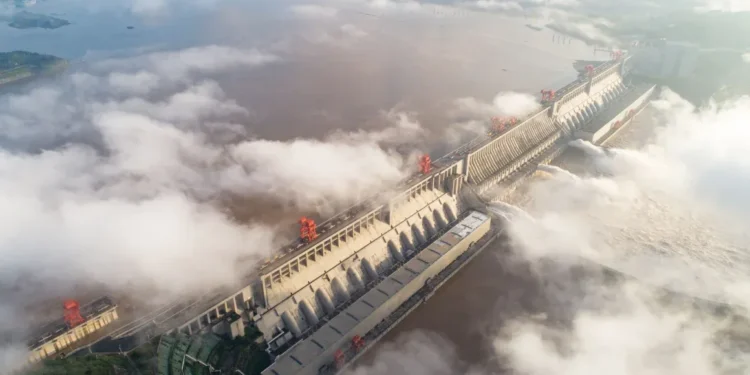The Three Gorges Dam in China had a measurable impact on Earth’s rotation, says scientists from the US space agency NASA. The dam spans the Yangtze River in Hubei province, China. It is about 2,335 meters (7,660 feet) long and 185 meters (607 feet) high. The reservoir created by the dam is 600 kilometers (370 miles) long and can hold up to 39.3 cubic kilometers (9.43 cubic miles) of water.
The primary purpose of the dam is to generate electricity. It has an installed capacity of 22,500 megawatts, making it the largest hydroelectric power station in the world.
The massive weight of the water stored in the dam’s reservoir has increased Earth’s moment of inertia. This means that the distribution of Earth’s mass has changed, causing a slight decrease in the speed of Earth’s rotation.
As a result, the length of a day has increased by about 0.06 microseconds. While this change is incredibly small and not noticeable in daily life, it is scientifically significant.
If filled, the dam would hold 40 cubic kilometers (10 trillion gallons) of water. That shift of mass would increase the length of day by only 0.06 microseconds and make the Earth only very slightly more round in the middle and flat on the top. It would shift the pole position by about two centimeters (0.8 inch).
Other Effects
Power Generation: The dam generates a massive amount of electricity, approximately 88.2 billion kWh annually, making it the world’s largest hydroelectric power station.
Environmental Impact: The construction and operation of the dam have led to significant environmental changes, including the relocation of over 1.2 million people and the flooding of large.
Future Projects
China is planning to build an even larger dam on the Yarlung Tsangpo River, which could have even more pronounced effects on Earth’s rotation and the environment.
It’s fascinating how human engineering can have such a profound impact on our planet.










Discussion about this post